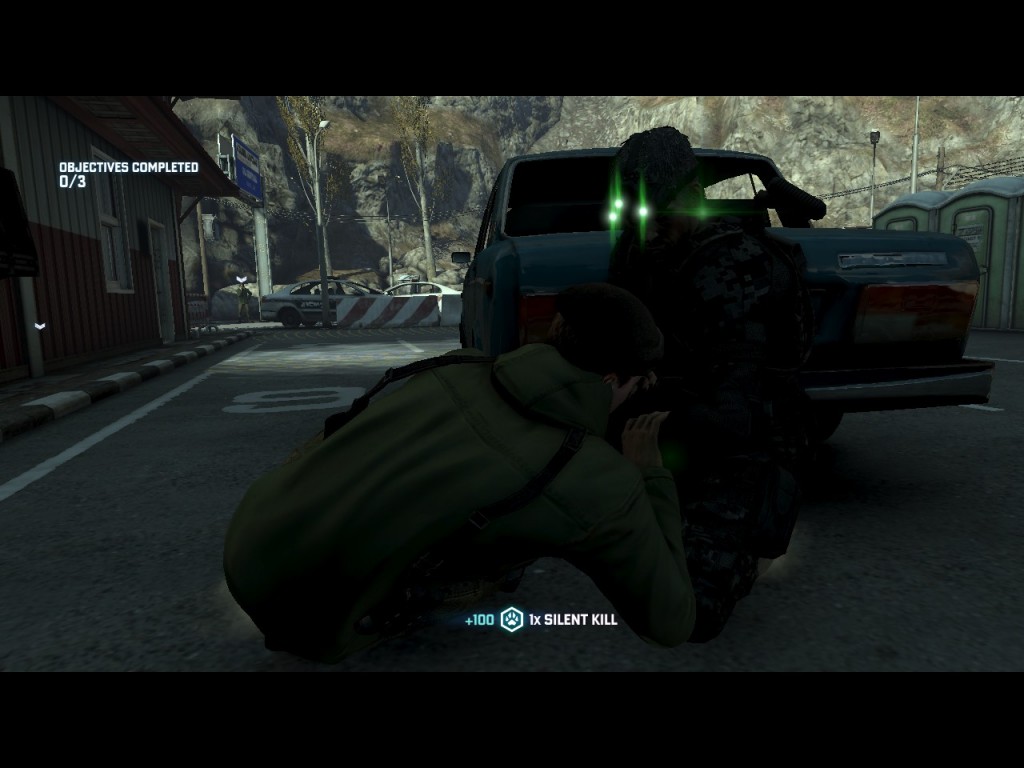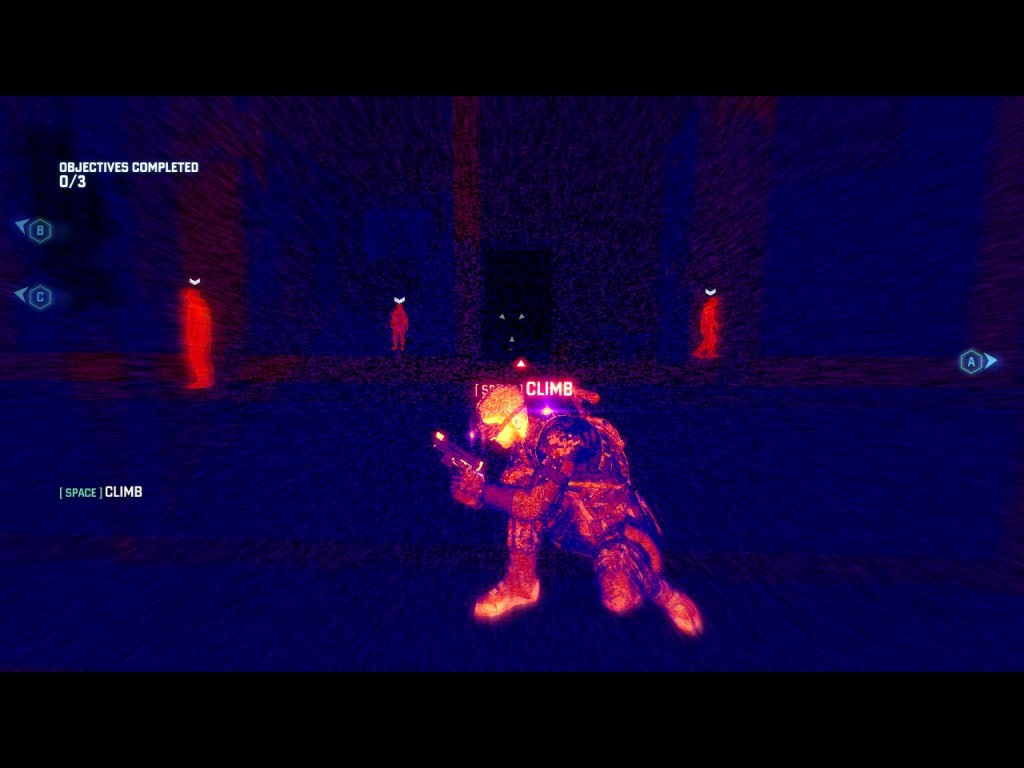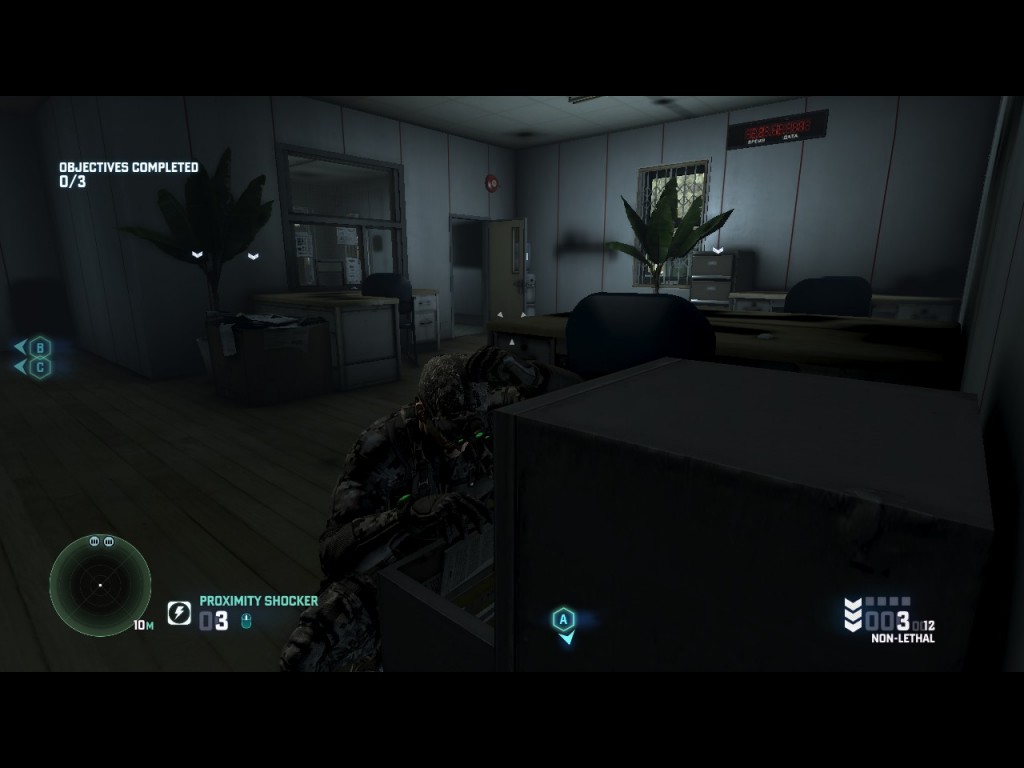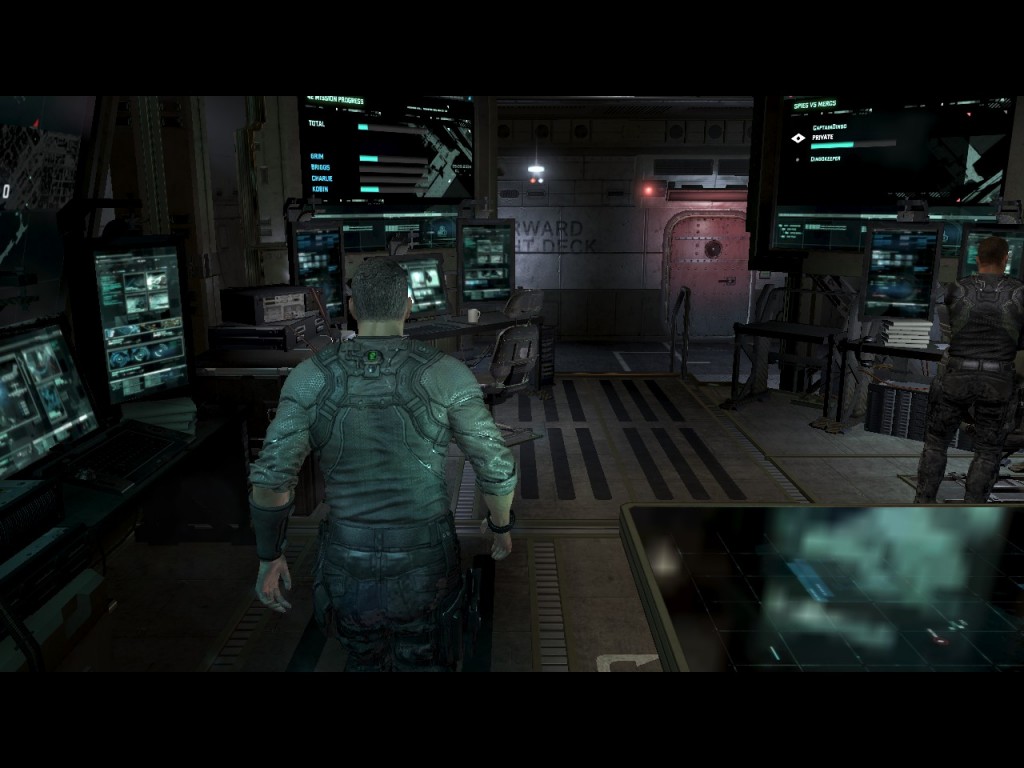Splinter Cell: Chaos Theory is the undisputed pinnacle of the Splinter Cell series. Double Agent watered down the formula, was so buggy that many people could not complete the game, and introduced nonsensical forced puzzles. Conviction eliminated important stealth aspects and forced you into assaults in the name of mindless action to appease the mainstream non-stealthy gamer; it was without a doubt the worst Splinter Cell game ever conceived of.
So after years of outcry from hardcore fans, does Ubisoft finally get it? Let’s investigate.
First off, because we need to get it out of the way (and it is important), Sam Fisher is no longer voiced by Michael Ironside. This is a conspicuous absence, and it will haunt you every single time Sam opens his mouth. Despite being 56 (correct me if I’m wrong, fellow Splinter Cell fanatics) years old, Sam now sounds like 25-Year-Old Generic Military First Person Shooter Guy and has the generic dialogue to match. You can tell at many points that he’s trying to gruff it up to attempt an Ironside-like performance, but it’s simply not the same and he lacks any charisma. On top of that, as someone who is intimately familiar with game development, Ubisoft’s official response that it wasn’t possible to use Ironside because he was incapable of doing the motion capture is bogus by my estimation; there’s absolutely no technological barrier that would have stopped Michael Ironside from giving a facial performance while someone else carried out the motion capture, then blending the two together.
Issues with Sam now being a piece of wood aside, let’s talk about the story. It’s a bit confusing even if you’ve been following the whole series as I have, but the gist of it is that there is a terrorist group called The Engineers who have given the United States an ultimatum. Every day the US doesn’t pull its troops out of the countries it’s occupying, a new terrorist attack will be launched.
As these threats unfold, Sam, Grimmsdottir, and others who are part of Fourth Echelon–I don’t know when that all happened either–must be proactive in stopping them. This is about as much as can be said without giving away any plot points.
After a short introduction level, you’re aboard the Paladin, Fourth Echelon’s high-flying base of operations. There, you have a mind-boggling amount of things you can do. First and most importantly you can view the digital world map which shows you all campaign missions as well as repeatable side missions. From here you can also get into any other mode, be it co-op or Spy vs. Mercenary. There are also daily and weekly challenges you can complete for bonus cash.
Why get cash? Because unlike previous Splinter Cell games, you now have an extensively customizable loadout system. There are about a dozen different gadgets, oodles of guns, and you can also separately equip gloves, torso armor, pants, and boots. Clothing is either geared towards stealth or combat, with stealth making you harder to see and quieter while combat is… well, unimportant, because this is a Splinter Cell game. But in theory, you can be a beef train that absorbs a ton of bullets.
The Paladin can also be upgraded for little passive bonuses and extra perks.
Sonar goggles are back, but unlike in Conviction they don’t feel as cheaty. Half the surfaces in most levels don’t allow sonar penetration, and with the inclusion of a new enemy, the drone operator, your sonar vision can be jammed outright, forcing you to use naked sight or night vision. This is a welcome change. Meanwhile, other new enemies such as dogs will challenge you in different ways.
If you really care about Splinter Cell then you ultimately have one question on your mind: Is Blacklist anything like Chaos Theory? The surprising answer is yes, actually. While assault is an option for most levels, it is punished unlike in Conviction where it didn’t ultimately matter (and often forced you into assaults). Virtually all of the new and returning gadgets are made for stealth play. Sticky cameras shoot gas by default once again, and there are numerous incapacitation options like sleeping gas and proximity sticky shockers. Those are pretty damn cool because they stick to a surface and unleash a very small radius electrical shock that can potentially knock out more than one person if it detects movement.
Bodies can be moved again at long last, meaning you can now hide all evidence of your passing without having to avoid guards altogether, and just like in Chaos Theory, you can clearly choose between lethal and non-lethal melee at the press of a button. The movement and cover system is straight from Conviction, but still works okay for full stealth.
Speaking of lethality, there is a difference. As mentioned, you get punished points-wise for playing Assault at the end of the level, but there are actually 3 noted styles of play in Splinter Cell: Blacklist. The first style is Ghost, which awards the most points. In order to Ghost, you must ensure that nobody is killed, and that your knockouts aren’t done in combat. If you follow these rules you’ll be awarded a healthy dose of points for each stealth incapacitation, as well as points for each guard you left simply undisturbed altogether.
The second style is Panther. Like Ghost, Panther points only count if you strike from stealth, however Panther style relies more on fatal or aggressive stealth. Stabbing from the shadows will grant Panther points, as will throwing nerve gas. However, Panther actions award slightly less points than Ghost actions, with Assault actions gaining you the least amount of points. These points all coalesce at the end of the mission and determine how much money you’ve made, though it appears you also get a bonus for sticking to one style for the entirety of a mission. Splinter Cell veterans will want to exclusively play as Ghost, Panther, or a mixture of the two.
So let’s talk about Spies vs. Mercenaries. Prior to Blacklist, this game mode always used the same rather stilted and ugly engine separate from the single player game, however in Blacklist the mode is entirely remade. The goals remain the same; the Spies have to complete an objective, while the Mercenaries have to stop them. Spies play the game in typical Splinter Cell style whereas Mercenaries are controlled as a first-person shooter. The biggest difference has to, again, do with the loadout system. Spies can be loaded out for speed, stealth, or combat ability, each bringing something interesting to the table. Mercenaries can be similarly loaded out, except their primary concern is combat ability should they find a Spy and armor capabilities. I’m not a fan of versus modes, but what I played of it definitely seems like a solid upgrade and I could especially see value in playing 1 on 1 matches with friends, though a match can have up to 4 players on each team.
Technically, you can expect about the same as you got from Conviction as it uses the same engine: Good graphics, but curiously sluggish performance on the PC for seemingly no reason. It’s not terrible, but it’s there, and considering nowadays the still-gorgeous Chaos Theory runs at about a bazillion frames per second, it seems like poor optimization.
I’ve referenced Chaos Theory maybe too many times in this review, but let’s face it, after Double Agent and Conviction left a bad taste in the mouth of every Splinter Cell fan, we’ve wondered whether Ubisoft still understands what makes stealth games good. And although Blacklist is no Chaos Theory, it’s certainly no Conviction, and that’s a good sign for the road ahead.










